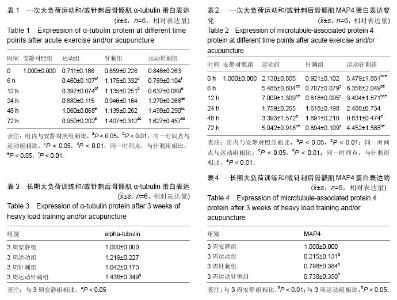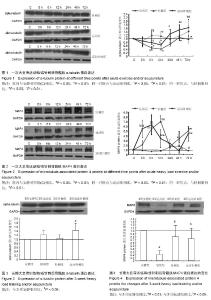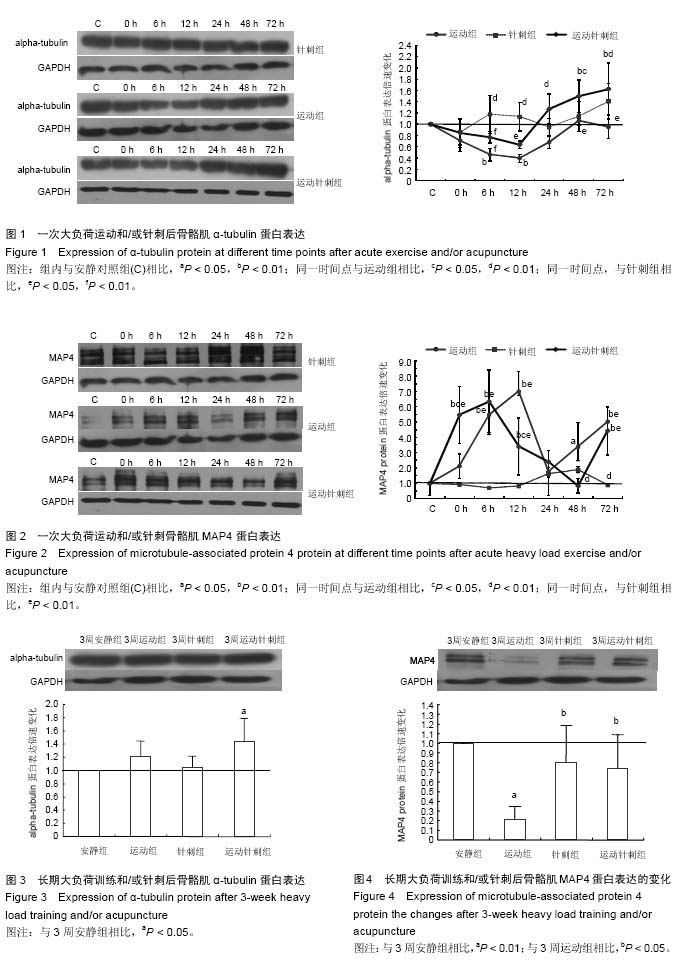| [1] 卢鼎厚,樊景禹,屈竹青,等.针刺和静力牵张对大负荷运动后骨骼肌收缩结构变化影响的免疫电镜研究[J].体育科学,1992,12(6): 47-51.
[2] 李晓楠.针刺与静力牵张对大负荷斜蹲后人骨骼肌Z带变化影响的免疫电镜研究[J].体育科学,1992, 6: 60-65.
[3] 袁建琴,王瑞元,李肃反.离心运动对大鼠骨骼肌结蛋白分布和表达的影响-对骨骼肌操作机制的研究[J].体育科学, 2005,25(6):63-66.
[4] YM Xu,JP Lee,WB Fang,et al. Effects of Hypoxic Uphill Exercise on Changes in Sarcolemma Integrity and Dystrophin Centent in Rat Skeletal Muscle. Journal of Exercise science and fitness,2008,6(2): 97-105.
[5] 李俊平.低氧、低氧运动对骨骼肌Titin和Nebulin的影响机理[D].北京体育大学,2007.
[6] 马新东,高前进,李俊平,等.离心运动对细胞外基质蛋白含量和膜完整性的影响.北京体育大学学报[J],2008, 31(5): 618-622.
[7] 张学林,史冀鹏,高晓娟,等. 针刺对离心运动性骨骼肌过度使用损伤的治疗研究[J].中国运动医学杂志, 2013, 32(10):899-909.
[8] 史冀鹏,徐红旗,高晓娟,等.一次性离心运动及针刺对大数骨骼肌生肌调节因子的影响[J].北京体育大学学报, 2014, 37(10):65-70.
[9] José MG. Introduction to mitochondria in the heart. Mitochondria and their role in cardiovascular disease. 2013;3-11.
[10] Marc L,Orian SS. Mitochondrial dynamics in the regulation of nutrient utilization and energy expenditure. Cell Metabolism.2013;17:491-506.
[11] Cai Q, Sheng ZH. Mitochondrial transport and docking in axons. ExpNeurol.2009;218: 257-267.
[12] José MG, Alexander TA, Gordon WM. Mitochondria in heart failure: the emerging role of mitochondrial dynamics. J Card Fail.2013;18(4):439-456.
[13] Guzun R,Varikmaa MK,Granillo MG,et al. Mitochondria-cytoskeleton interaction: Distribution of β-tubulin in cardiomyocytes and HL-1 cells. Biochim Biophys Acta.2011;1807: 458-469.
[14] Kely LS, Philip AG, Sergey MB, et al. Tubulin tail sequences and post-translational modifications regulate closure of mitochondrial voltage-dependent anion channel (VDAC). J Biol Chem.2015;290: 26784-26789.
[15] Vandroux D, Schaeffer C, Tissier C,et al. Microtubule alternation is an early cellular reaction to the metabolic challenge in ischemic cardiomyocytes. Mol Cell Biochem. 2004;258: 99-108.
[16] Armstong RB. Eccentric exercise-induced injury to skeletal muscle. Appl Phyiol.1983;54: 80-93.
[17] Takekura H, Fujinami N, Nishizawa T, et al. Eccentric exercise-induced morphological changes in the membrane systems involved in excitation-contraction coupling in rat skeletal muscle. J Physiol.2001; 533(pt2):571-583.
[18] 张学林,高晓娟,史冀鹏,等.离心运动引起骨骼肌过度使用损伤机理研究[J].中国运动医学杂志, 2012,31(12): 1064-1074.
[19] Geyer EA, Burns A, Lalonde BA, et al. A mutation uncouples the tubulin conformational and GTPase cycles, revealing allosteric control of microtubule dynamics. Elife. 2015 Oct 6;4. pii: e10113.
[20] Kely LS, Dan LS. The ability of tubulin to close mitochondrial VDAC pores depends on beta tubulin isotype. Cancer Res.2015; 75: 3044.
[21] Boudriau S, Vincent M, Cote CH, et al. Cytoskeletal structure of skeletal muscle: identification of an intricate exosarcomeric microtubule lattice in slow- and fast- twitch muscle fibers.J Histoch& cytochem.1993; 41(7):1013-1021.
[22] Meredith HW, Erika H. Opposing microtubule motors drive robust nuclear dynamics in developing muscle cells. J Cell Sci.2012;125: 4158-4169.
[23] Heins DC. Ischemia induces early changes to cytoskeletal and contractile proteins in diseased human myocardium. J Thorac Cardiovas Surg.1995; 110(1): 89.
[24] Sakurai T, Fujita Y, Ohto E, et al. The decrease of the cytoskeleton tubulin follows the decrease of the associating molecular chaperone αB-crystallin in unloaded soleus muscle atrophy without stretch. FASEB J.2005;10: 1096/fj.04-3060fje.
[25] Zhang BT,Nicholas PW,Othon LG,et al. Pathways of Ca2 + entry and cytoskeletal damage following eccentric contractions in mouse skeletal muscle. J Appl Physiol.2012;112: 2077-2086.
[26] 刘阳,王瑞元,康红哲.不同时程下[Ca2+]i介导骨骼肌微细损伤与修复的机制及针刺的干预作用[J].北京体育大学学报, 2015,38(2):54-60.
[27] Semenova I, Ikeda K, Resaul K, et al. Regulation of microtubule-based transport by MAP4. Mol Biol Cell. 2014; 25: 3119 - 3132.
[28] Hu JY, Chu ZG, Han J, et al. The p38/MAPK pathway regulates microtubule polymerization through phosphorylation of MAP4 and Op18 in hypoxic cells. Cell Mol Life Sci.2010;67: 321-323.
[29] 李俊平,徐玉明,高晓娟,等. 一次低氧运动后快肌和慢肌Titin和Nubulin蛋白含量的变化[J]. 北京体育大学学报, 2012,35(6): 47-50.
[30] Binyam M, Daniel R, Zainab R, et al. A novel isoform of MAP4 organises the paraxial microtubule array required for muscle cell differentiation. eLife Sci. 2015; 4: e05697.
[31] 屈竹青,卢鼎厚,王义润,等.针刺对骨骼肌损伤过程中细胞内钙分布的影响及其机制[J].中国运动医学杂志, 1995, 14(1): 7-11.
[32] 李澎涛,于鸿玲,康锁彬,等.针刺对超负荷运动家兔骨骼肌超微结构影响[J].上海针灸杂志,1994, 6(3):127-128.
[33] Snijders T,Verdijk LB,Smeets JS,et al. The skeletal muscle satellite cell response to a single bout of resistance type exercise is delayed with aging in men. Age (Dordr).2014;36(4):96-99.
[34] 刘晓然.离心运动后大鼠骨骼肌微管蛋白和线粒体的关联及针刺干预研究[D].北京体育大学, 2013.
[35] Campbell A.The modernization of acupuncture. Acupunct Med.2015; 33(6):496-497. |



